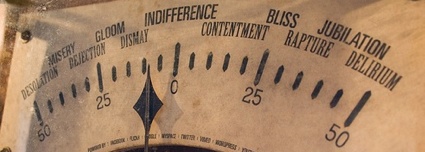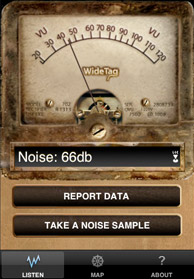Cybraphon is happy with your tweets
 Wednesday, August 5, 2009 at 15:39 tagged
Wednesday, August 5, 2009 at 15:39 tagged  installations,
installations,  internet
internet 
Does your Facebook follower count or the amount of Twitter messages you receive influence your mood? It does for Cybraphon, an interactive sound installation by Edinburgh-based artist collective FOUND.
Cybraphon is like a mechanic band in a closet which plays everything between very sad and very happy music, depending on its ‘mood’. This mood is determined by things like Facebook friends, or website visitors.
Cybraphon is an interesting attempt to link the physical with the online world through music. It actually sounds quite nice! What I do miss is a live stream of some kind which shows the effect of the online activities.
Cybraphon will be unveiled at the Edinburgh Arts Festival today, 5 August 2009. Here are some demos of the music it plays:









